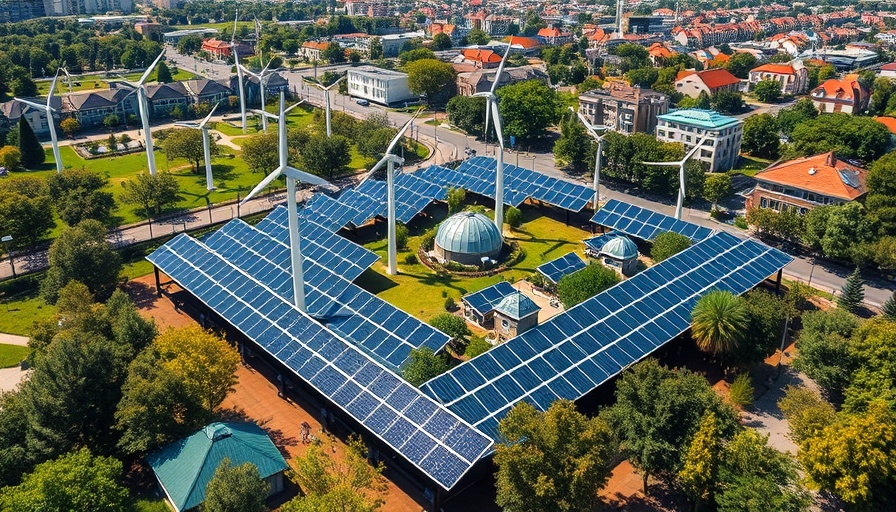
Oregon's Game-Changing Move: What Are Microgrids?
In an age where energy independence and sustainability take center stage, Oregon is stepping up its game with groundbreaking legislation for microgrid deployment. But what exactly are microgrids? Essentially, these localized energy systems can operate independently or in conjunction with the traditional grid, offering a powerful solution for energy resilience. This move is not just a retail-level shift; it serves as a blueprint for states grappling with energy demands, integrating technology to meet modern challenges.
A Fresh Approach to Sustainability in Construction
Why should commercial construction clients care? As the industry pivots towards greener practices, the integration of microgrid technology empowers project managers to significantly enhance project efficiency and cost management. Imagine a construction site powered by renewable energy sources, reducing dependence on fossil fuels and optimizing operational costs—even during disasters and outages. Beyond saving bucks, this approach aligns with global sustainability targets, making it a compelling case for stakeholders.
Predicting the Future: What Lies Ahead for Microgrids?
With Oregon’s pioneering laws in place, the future shines bright for microgrids. Future trends suggest that as more states adopt similar legislation, the push towards decentralized energy production will only gain momentum. Companies investing now in these technologies could find themselves ahead of the curve, capitalizing on not just energy savings but potential tax incentives and grants available for sustainable energy solutions.
What You Can Do Now: Embrace Change
This is where the actionable insights kick in. As a client of a commercial construction company, you have the power to influence which technologies get implemented in your projects. Promote discussions about microgrid feasibility with your contractors. Advocate for building designs that incorporate these systems early in the planning phases.
Understanding the Risks: Navigating Changes in Energy Policy
However, it’s not all sunny skies ahead. The transition to microgrids does come with inherent risks, including the need for infrastructure investment and potential regulatory hurdles. Keeping abreast of policy changes and ensuring compliance with newly established guidelines will be essential to exploit these advantages fully. As a stakeholder, being proactive about understanding these challenges will position you to mitigate risks effectively.
Join the Conversation: Future-Proof Your Projects
As we delve into these exciting developments in microgrid technology, it’s time for construction clients to join the conversation on sustainable practices. Engage fellow stakeholders, voice your opinions during project planning, and drive the industry towards smarter, greener futures. The initiative from Oregon is merely a stepping stone; let’s collectively march forward to redefine energy use in construction.
If you’re eager to learn more and stay informed on how such innovations can impact your projects, consider reaching out to your commercial construction partners today. The future of sustainable building is here, and it’s time to get on board!
 Add Row
Add Row  Add
Add 




Write A Comment